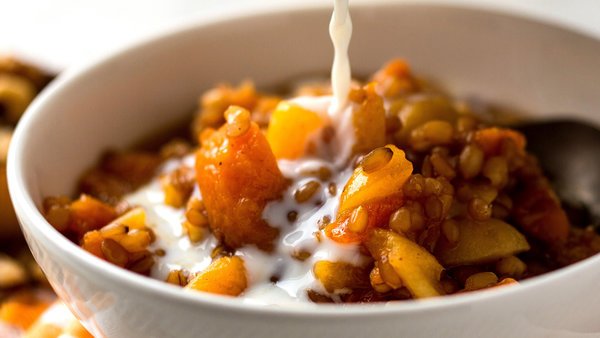Central to this revolution is the rise of ancient grains, which have become a staple in healthy cereals. In an era where consumers are more health-conscious than ever, ancient grains offer a rich source of essential nutrients, making them a valuable addition to any breakfast routine.
What Are Ancient Grains?
Ancient grains refer to a group of grains that have remained largely unchanged over the last several millennia. Unlike more modern, hybridized grains like wheat, these grains are often less processed, meaning they retain much of their original nutritional profile. Some of the most popular ancient grains include:
Quinoa: Known as a complete protein, quinoa contains all nine essential amino acids, making it a particularly valuable source of protein for vegetarians and vegans.
Millet: A gluten-free grain, millet is rich in magnesium, phosphorus, and antioxidants, making it great for heart health and overall wellness.
Spelt: A distant cousin of wheat, spelt is higher in protein and fiber than its modern counterpart, with a nutty flavor and robust texture.
Farro: This hearty grain has a chewy texture and is rich in fiber, magnesium, and iron, contributing to improved digestion and better blood circulation.
These grains have been staples in the diets of ancient civilizations for good reason. They are nutrient-dense, minimally processed, and offer a variety of health benefits that modern cereals made from refined grains simply can’t match.
The Rise of Ancient Grains in Breakfast Cereal
As consumers demand healthier breakfast options, manufacturers have responded by incorporating ancient grains into their cereal formulations. The result is a product that may be high in sugar and low in the fiber and protein necessary for sustained energy throughout the day.
Ancient grains, on the other hand, offer a perfect solution for health-conscious individuals looking for cereals that provide long-lasting energy without the sugar spikes. These grains are minimally processed, which means they retain more fiber, protein, and essential vitamins and minerals. Moreover, because they are less common in the Western diet, many of them are also naturally gluten-free, making them an excellent choice for individuals with gluten sensitivities or those simply looking to diversify their grain intake.
Health Benefits of Ancient Grains
One of the primary reasons are being hailed as the future of lies in their impressive nutritional profile. Each type of grain brings its own set of benefits, but collectively, they offer the following advantages:
1. Rich in Fiber
Fiber is a key component of a healthy diet, aiding in digestion and helping to maintain a feeling of fullness that can prevent overeating. Many ancient grains, such as spelt and quinoa, are naturally high in fiber, making them an excellent choice for breakfast. A high-fiber diet is also associated with reduced risk of heart disease, type 2 diabetes, and certain cancers.
2. High in Protein
For those who follow plant-based diets, ancient grains provide a valuable source of protein. Quinoa, in particular, is one of the few plant-based foods considered a complete protein. Other grains, like spelt and farro, also contain substantial amounts of protein, making them a great addition to a balanced breakfast for people looking to increase their protein intake without relying on animal products.
3. Packed with Micronutrients
Ancient grains are rich in essential vitamins and minerals, including magnesium, iron, phosphorus, and zinc. Magnesium is critical for nerve function and heart health, while iron is essential for carrying oxygen in the blood. These grains are also a good source of antioxidants, which protect the body from oxidative stress and inflammation.
4. Gluten-Free Options
Many ancient grains, such as millet and quinoa, are naturally gluten-free. This makes them a great alternative for individuals with celiac disease or gluten intolerance. Including these grains in breakfast cereals allows for greater dietary diversity without compromising on nutrition.
Sustainability and Ancient Grains
Many of these grains are more resilient to harsh weather conditions and require less water, making them ideal for cultivation in regions with limited resources. By choosing cereals made with ancient grains, consumers can support more environmentally friendly food systems.
How to Incorporate Ancient Grains into Your Diet
Integrating ancient grains into your diet is easier than ever, thanks to their growing popularity. Healthy cereals made with these grains are now widely available in supermarkets and health food stores. When choosing a cereal, look for options that list ancient grains like quinoa, millet, or spelt as the primary ingredients. It’s also a good idea to choose cereals that are low in added sugars and artificial ingredients to maximize the health benefits.
For those who prefer a homemade touch, ancient grains can also be cooked and incorporated into homemade granola or used as a topping for yogurt.
Conclusion: Ancient Grains – A Nutritional Powerhouse for Breakfast
The inclusion of ancient grains in healthy cereals is more than just a trend; it’s a return to nature’s original superfoods. Whether you’re looking to improve your diet, avoid gluten, or simply add variety to your meals, ancient grains offer a delicious and nutritious option. With their growing availability, it’s never been easier to make ancient grains a staple of your breakfast routine.
